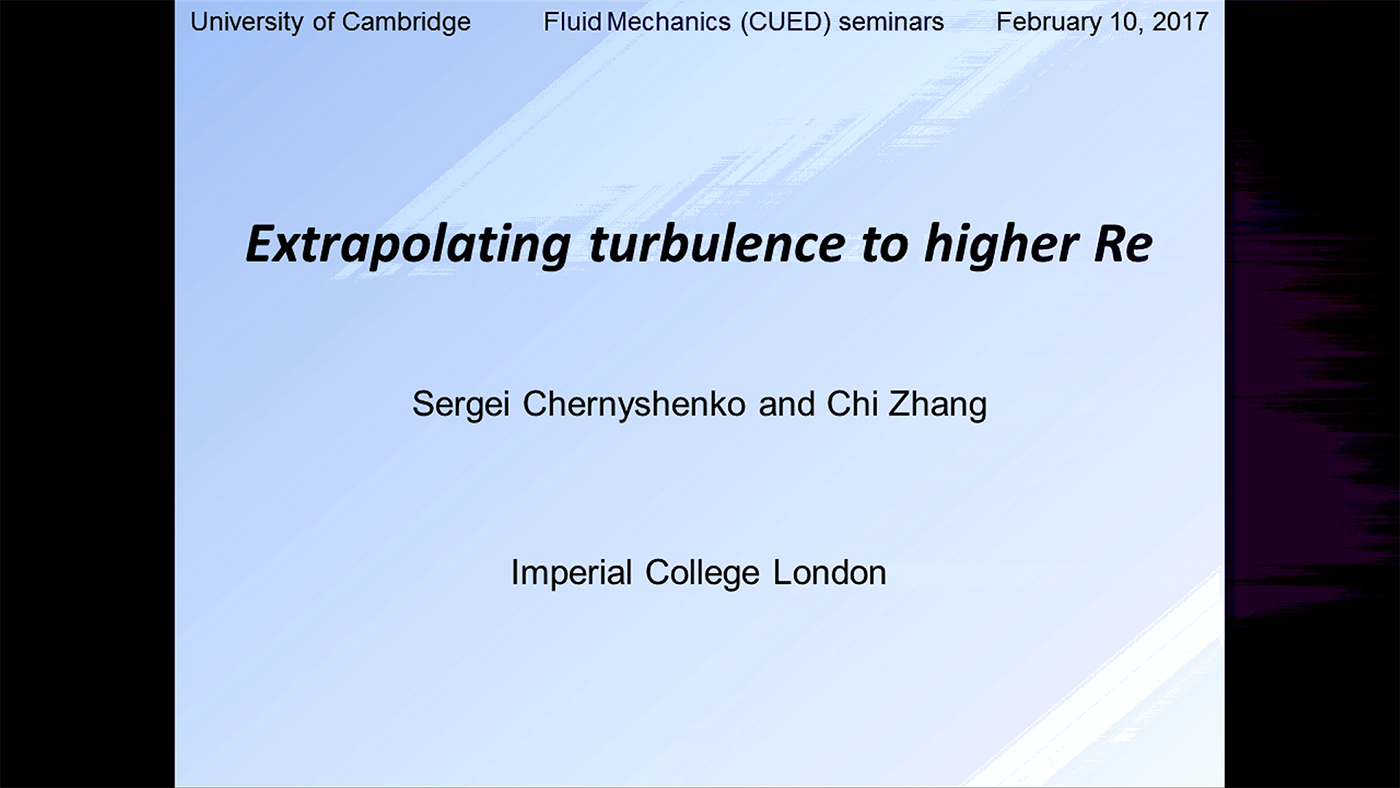'Extrapolating turbulence to higher Re' by Sergei Chernyshenko (ICL)
Duration: 51 mins 59 secs
Share this media item:
Embed this media item:
Embed this media item:
About this item

| Description: |
Talk given by Prof Sergei Chernyshenko (Department of Aeronautics, Imperial College, London) at Department of Engineering, University of Cambridge, 10 February 2017, as part of the CUED Fluids seminar series.
The talk discusses methods for extrapolating turbulence-related results from DNS and wind tunnel experiments to higher Re. The recently-developed quasi-steady quasi-homogeneous (QSQH) theory, which relates near-wall turbulence to outer large-scale turbulent structures, is described, and some initial results from the theory, on extrapolating turbulence statistics to higher Re, are given. |
|---|
| Created: | 2017-02-14 16:03 |
|---|---|
| Collection: | Cambridge Engineering Dept Fluids Seminars |
| Publisher: | University of Cambridge |
| Copyright: | Sergei Chernyshenko |
| Language: | eng (English) |
| Keywords: | Turbulence; Turbulence modelling; Large Re flows; Turbulent large-scale structures; QSQH theory; Quasi-steady; Quasi-homogeneous; |
| Abstract: | In many practical applications, the Reynolds number Re is much greater than the largest Re that can be achieved in direct numerical simulations and wind-tunnel experiments. Hence, to apply the turbulence-related results obtained in a wind tunnels or with computers, extrapolation to higher Re is needed. For the part of the flow very close to the wall such extrapolation is usually based on the classical universality hypothesis stating that near the wall the turbulent flow parameters, expressed in so-called wall units, are independent of Re. However, in recent years it was established that the large-scale structures residing further away from the wall affect the near-wall turbulence. Since these structures, if expressed in wall units, are not Re-independent, the classical universality hypothesis is not correct. Moreover, recent data indicate that as Re increases the outer large-scale structures become stronger. An outline will be given of the new technique for extrapolating statistical characteristics of near-wall turbulence from medium to higher Re, based on the recently developed quasi-steady quasi-homogeneous (QSQH) theory. The QSQH theory is an alternative to the classical universality hypothesis. The QSQH theory provided relationships between many turbulence parameters previously thought to be unrelated, including for example those entering the well-known empirical formula for the modulation of near-wall turbulence by outer structures, and threw a new light on the Re-dependence of the logarithmic law constants. First results on extrapolating turbulence statistics to higher Re will also be presented. |
|---|---|
Available Formats
| Format | Quality | Bitrate | Size | |||
|---|---|---|---|---|---|---|
| MPEG-4 Video | 1280x720 | 1.63 Mbits/sec | 636.36 MB | View | Download | |
| MPEG-4 Video | 640x360 | 679.55 kbits/sec | 258.73 MB | View | Download | |
| WebM | 1280x720 | 1.17 Mbits/sec | 457.43 MB | View | Download | |
| WebM | 640x360 | 351.6 kbits/sec | 133.91 MB | View | Download | |
| iPod Video | 480x360 | 503.29 kbits/sec | 191.62 MB | View | Download | |
| MP3 | 44100 Hz | 249.72 kbits/sec | 95.45 MB | Listen | Download | |
| Auto * | (Allows browser to choose a format it supports) | |||||

